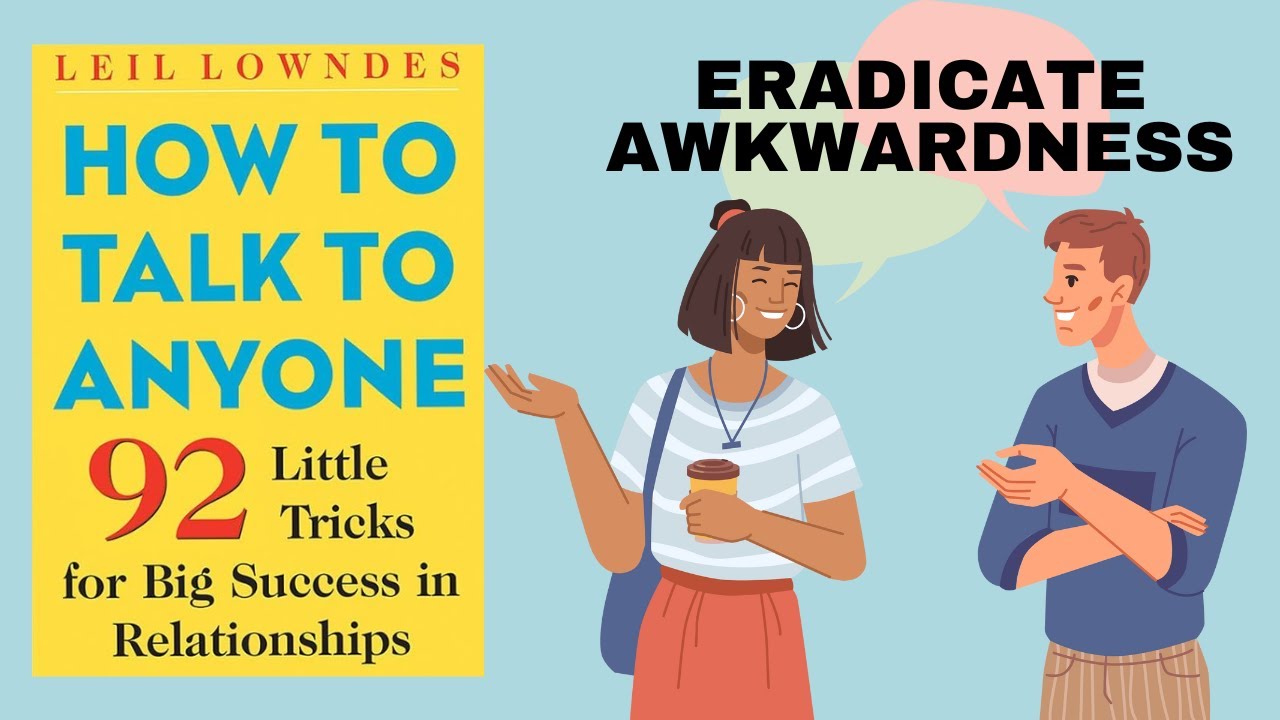Leil Lowndes' book 'How to Talk to Anyone' offers 92 techniques to enhance communication skills, emphasizing the importance of making others feel liked, using effective body language, and mastering small talk. This blog post summarizes key ideas from the book, providing practical tips for improving social interactions and building rapport.
Communication is a fundamental aspect of human interaction, influencing how we connect with others in both personal and professional settings. In her book, "How to Talk to Anyone," Leil Lowndes provides valuable techniques for those who struggle with confidence in social situations. This summary explores key insights from the book, offering practical tips to enhance your communication skills and foster better relationships.
The Importance of Communication
Effective communication is essential for societal progress and personal relationships. Many individuals find it challenging to express their needs or desires due to shyness or self-doubt. Lowndes emphasizes that learning how to communicate effectively can significantly improve social interactions.
Key Techniques for Better Communication
1. Make Others Feel Liked
Before engaging in conversation, it is crucial to ensure that the other person knows you like them. Lowndes argues that social interactions are driven by the need to feel valued and appreciated. When people feel liked, they are more comfortable and open to conversation. To overcome anxiety, focus on how you want the other person to feel rather than your own discomfort.
2. Speak Like a Celebrity
Research from the Carnegie Foundation indicates that communication skills account for 85% of a person's success. Instead of asking, "What do you do?" try asking, "How do you spend most of your time?" This approach shows interest and suggests familiarity with the group. Tailor your responses to highlight aspects of your work that might intrigue the listener, making your story engaging and relatable.
3. Find Common Ground
People are drawn to those with whom they share interests. To build rapport, observe the other person's gestures and body language, and mirror them respectfully. Use their language and terminology to create a sense of familiarity and connection.
4. Utilize Non-Verbal Cues
Body language plays a significant role in first impressions, accounting for over 80% of how people perceive you. Pay attention to your posture, eye contact, and facial expressions. A relaxed and open posture conveys friendliness and confidence, while poor posture can signal insecurity.
5. Understand Body Language Types
Lowndes identifies 11 types of body language that convey different messages. For example, micro-expressions reveal true feelings, while gestures can indicate comfort or discomfort. Being aware of these signals can help you navigate social interactions more effectively.
6. Stand Tall
Good posture is essential for making a positive impression. Standing tall conveys confidence and openness, while slouching can suggest insecurity. Maintain an open stance to invite conversation.
7. Relax and Eliminate Barriers
Fidgeting or crossing your arms can signal defensiveness or discomfort. Instead, adopt a relaxed posture with your arms at your sides to appear approachable and trustworthy.
8. Avoid Fidgety Movements
Certain movements can create barriers in communication. Avoid actions like checking your watch or fiddling with your clothes, as these can indicate boredom or disinterest.
9. Smooth Introductions
To initiate conversations, consider asking a mutual acquaintance for an introduction or using icebreakers to ease into discussions. Being proactive in social settings can help you connect with others more easily.
10. Master Small Talk
Small talk is a valuable tool for building relationships. Instead of giving short answers, elaborate on your responses to keep the conversation flowing. Show genuine interest in the other person by asking follow-up questions and actively listening.
11. Build Rapport Through Imitation
People tend to like those who mirror their behavior. Subtly imitate the other person's gestures and language to create a sense of connection. Using empathizing phrases instead of filler words can also enhance rapport.
12. Delay Your Smiles
Quick smiles can come off as insincere. Instead, maintain eye contact and smile warmly after a brief pause to make the interaction feel more personal.
13. Pretend to Be Friends
Imagining that you are already close friends with someone can help alleviate discomfort in social situations. This mindset can lead to more genuine interactions and foster positive feelings.
14. Sound Professional
In professional settings, clarity and directness are key. When communicating with superiors, get to the point quickly and focus on how your work benefits them.
15. Make a Good First Impression
First impressions matter. Enter a room confidently, engage with interesting individuals, and remember to listen actively. Taking the lead in conversations can help you stand out and make meaningful connections.
Leil Lowndes' "How to Talk to Anyone" offers a wealth of techniques for improving communication skills.
By applying these strategies, you can enhance your ability to connect with others, build rapport, and navigate social situations with confidence.
Whether in personal or professional contexts, mastering the art of conversation can lead to more fulfilling relationships and greater success.
